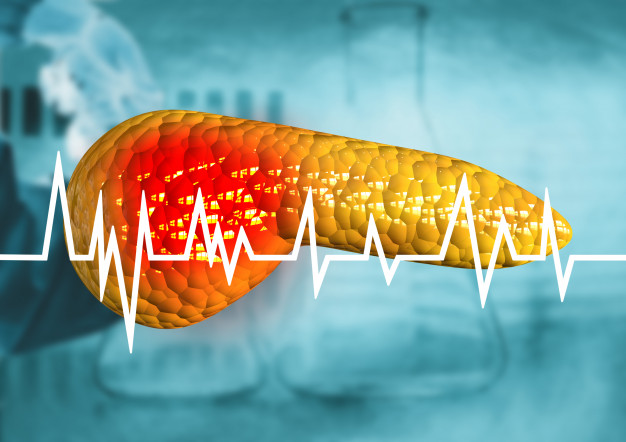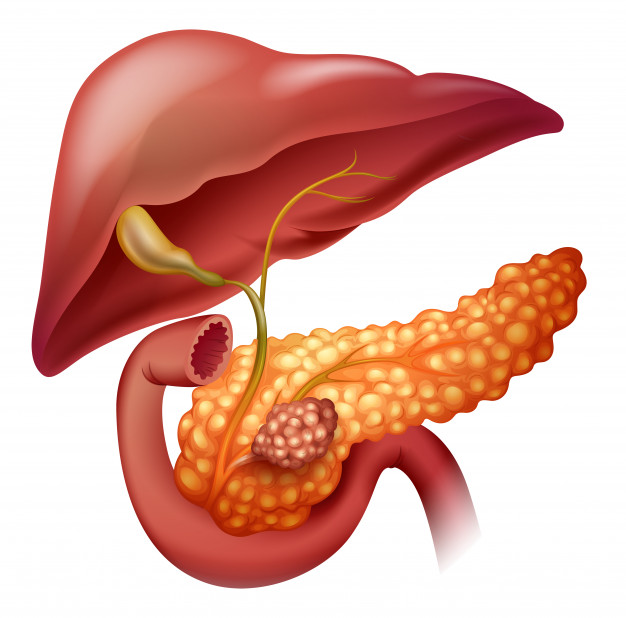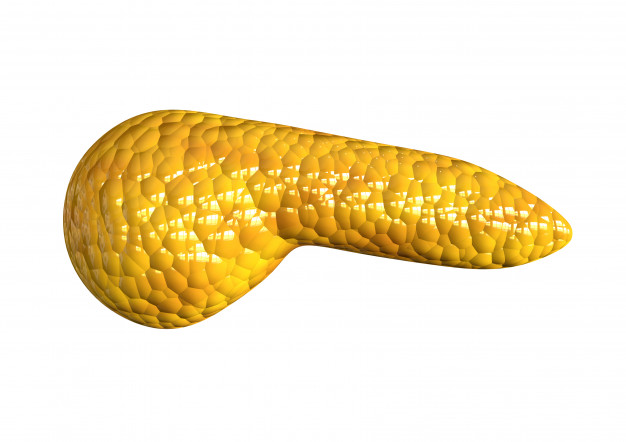Pancreas is a gland behind your stomach and in front of your spine. It produces the juices that help break down food and the hormones that help control blood sugar levels. Pancreatic cancer usually begins in the cells that produce the juices.
Pancreatic cancer occurs when malignant cells develop in part of the pancreas. This may affect the functioning of the exocrine or endocrine glands. Pancreatic cancer can occur in any part of the pancreas, but about 70% of pancreatic cancers are located in the head of the pancreas.

The pancreas is also a gland that makes insulin and other hormones. These hormones enter the bloodstream and flows throughout the body. They help the body use or store the energy that comes from food. For example, insulin helps control the amount of sugar in the blood.
Cancer begins in cells, the building blocks that make up tissues. Tissues make up the pancreas and the other organs of the body.
Normal cells grow and divide to form new cells as the body needs them. When normal cells grow old or get damaged, they die, and new cells take their place.
Sometimes, this process goes wrong. New cells form when the body doesn’t need them, and old or damaged cells don’t die as they should. The build up of extra cells often forms a mass of tissue called a growth or tumor.
Tumors in the pancreas can be benign (not cancer) or malignant (cancer). Benign tumors are not as harmful as malignant tumors:
-
Benign tumors(such as cysts):
- are usually not a threat to life
- can be removed and usually don’t grow back
- don’t invade the tissues around them
- don’t spread to other parts of the body
-
Malignant growths:
- may be a threat to life
- sometimes can be removed but can grow back
- can invade and damage nearby tissues and organs
- can spread to other parts of the body

Diagnosis
To diagnose pancreatic cancer, a doctor starts by performing a complete medical history and physical examination and ordering special blood tests. Other procedures used to diagnose pancreatic cancer may include the following:
- Ultrasound (also called sonography)—a diagnostic imaging technique that uses high-frequency sound waves to view internal organs of the abdomen such as the liver, pancreas, spleen, and kidneys and to assess blood flow through various vessels
- Computed tomography scan (also called a CT or CAT scan)—a diagnostic imaging procedure that uses a combination of X-rays and computer technology to produce cross-sectional images (often called slices) of the body
- Pancreas biopsy—a procedure in which a sample of pancreatic tissue is removed (with a needle or during surgery) for examination under a microscope
- Positron emission tomography (PET)—a procedure that evaluates the function and structure of a particular organ or tissue, allowing the doctor to identify the onset of a disease before anatomical changes related to the disease can be seen with other imaging procedures, such as a CT.
Treatment
Depending upon the type and stage, pancreatic cancer may be treated with medication to relieve or reduce pain, external radiation, conventional chemotherapy, targeted molecular therapy, or surgery to remove the tumor. The type of surgery depends on the stage of the cancer, the location and size of the tumor, and the person’s overall health.

